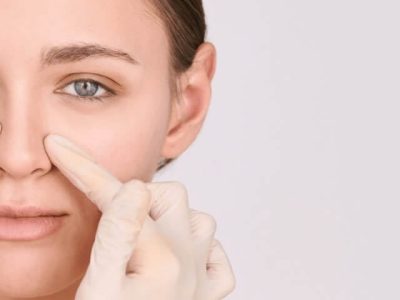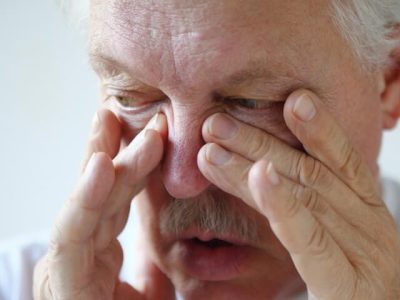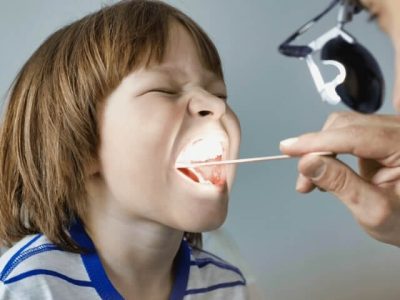Turbinate Hypertrophy and Treatments
The nasal turbinates are structures located inside the nose, with typically six of them (three on each side). These structures are responsible for warming, humidifying, filtering, and cleaning the air that enters the nasal passages. The most common issue related to turbinate hypertrophy (enlargement) is nasal congestion, which is often caused by the swelling of the inferior turbinates (the lower turbinates). These turbinates can grow in size under various conditions, both physiological and pathological.
The nasal turbinates are dynamic structures that adjust in size according to the body’s needs. Their function is regulated through blood flow and secretion, causing them to enlarge or shrink. While it is normal for turbinates to be larger during certain times, such as pregnancy or adolescence, they can sometimes be structurally enlarged from birth or as a result of diseases or environmental factors.
In this article, we will explore the different causes of nasal turbinate hypertrophy, its symptoms, and various treatment options.


What is Nasal Turbinate Hypertrophy?
Nasal turbinate hypertrophy refers to the enlargement of the turbinates inside the nose. The turbinates are crucial for regulating airflow, warming, and humidifying the air. When the turbinates become swollen or enlarged, they can block the nasal passages and cause breathing difficulties. This can lead to a wide range of issues, including chronic nasal congestion, sinus infections, and sleep disturbances.
In general, there are several underlying factors that contribute to nasal turbinate hypertrophy. These include:
- Allergic Rhinitis (Nasal Allergies): In individuals with allergies, the turbinates are constantly triggered by allergens such as pollen, dust, and pet dander. This persistent inflammation can lead to the continuous enlargement of the turbinates.
- Vasomotor Rhinitis: This condition is common, especially in middle-aged individuals. It is caused by environmental or psychological factors such as exposure to cold, polluted, or humid air, cigarette smoke, chemicals, fatigue, stress, and anxiety. These irritants can lead to permanent turbinate enlargement.
- Chronic Medical Conditions: Diseases like diabetes mellitus (type 2 diabetes) and hypothyroidism (underactive thyroid) can also contribute to turbinate swelling and hypertrophy.
- Medications: Certain medications, especially nasal decongestants used to treat sinus infections, can lead to medication-induced rhinitis (rhinitis medicamentosa) if used for an extended period. Overuse of these drugs can result in the turbinates becoming permanently enlarged. Additionally, medications used for heart conditions, hypertension, birth control pills, and psychiatric medications can also contribute to the enlargement of the turbinates.
Symptoms of Nasal Turbinate Hypertrophy
When the nasal turbinates enlarge, they can lead to a variety of symptoms that interfere with normal nasal breathing and overall health. Some of the most common symptoms of turbinate hypertrophy include:
- Chronic Nasal Congestion: Difficulty breathing through one or both nostrils, especially during sleep, can make individuals feel constantly congested or stuffy.
- Mouth Breathing: As the turbinates swell, nasal airflow is obstructed, causing the individual to breathe through the mouth, particularly at night. This can lead to dry mouth, sore throat, and other complications.
- Snoring and Sleep Apnea: Blocked nasal passages can contribute to snoring and increase the risk of sleep apnea, which can disrupt the quality of sleep and lead to fatigue during the day.
- Frequent Sinus Infections: When the turbinates are enlarged, they can obstruct the sinuses, preventing proper drainage and increasing the risk of recurrent sinus infections.
- Postnasal Drip: Swelling of the turbinates can lead to mucus accumulating in the back of the throat, causing irritation and coughing, especially at night.
- Facial Pain and Pressure: Due to the swelling in the nasal passages and sinuses, individuals may experience pain or pressure around the face, particularly in the cheeks, eyes, or forehead.


Diagnosis of Nasal Turbinate Hypertrophy
To diagnose nasal turbinate hypertrophy, a doctor will perform a thorough evaluation. This typically includes:
- Physical Examination: The doctor will examine the inside of the nose to check for swollen turbinates, often using a nasal speculum and a light.
- Nasal Endoscopy: A flexible tube with a small camera (endoscope) is inserted into the nose to provide a detailed view of the nasal passages and turbinates.
- Imaging Tests: In some cases, a CT scan may be used to assess the structure of the nasal cavity and sinuses, ruling out other possible conditions such as sinusitis or a deviated septum.
- Allergy Testing: If allergies are suspected, an allergy test may be recommended to identify specific allergens that could be triggering the inflammation.
Treatment Options for Nasal Turbinate Hypertrophy
Treatment for turbinate hypertrophy can vary depending on the underlying cause and the severity of the condition. For mild cases, non-invasive treatments may be sufficient to manage symptoms. However, in more severe cases, surgical intervention may be necessary.
- Non-Surgical Treatments
- Nasal Corticosteroid Sprays: These are the most common treatment for reducing inflammation and swelling in the turbinates. They work by suppressing the immune response in the nasal passages, reducing swelling and congestion.
- Antihistamines: For those with allergies, antihistamines can help reduce the allergic response and prevent further swelling of the turbinates.
- Decongestants: Decongestants can shrink the nasal tissues, providing temporary relief from congestion. However, these should be used cautiously and not for prolonged periods to avoid side effects.
- Saline Nasal Irrigation: Rinsing the nasal passages with a saline solution can help clear mucus, allergens, and irritants, providing relief from congestion.


- Surgical Treatments
If non-surgical treatments are ineffective or if the turbinate hypertrophy is severe, surgery may be recommended. The most common surgical procedures to treat turbinate hypertrophy include:
- Turbinate Reduction Surgery: This is the most common surgical treatment. During this procedure, a portion of the turbinate tissue is removed or reduced to improve airflow. Techniques used include:
- Radiofrequency Ablation: A minimally invasive procedure that uses heat to shrink the tissue of the turbinates.
- Submucosal Resection: A portion of the bone or cartilage in the turbinate is removed, and the mucosal lining is preserved.
- Endoscopic Sinus Surgery: If the turbinate hypertrophy is accompanied by chronic sinusitis or other structural issues, an endoscopic sinus surgery may be performed to improve drainage and restore normal airflow.
- Post-Surgery Care
- Recovery: After surgery, recovery time is typically short, and most patients return to normal activities within 3 days. However, it is important to avoid heavy lifting or strenuous activity for a week to prevent complications.
- Follow-Up Visits: Regular follow-up appointments with the surgeon are crucial to ensure proper healing and to monitor any potential complications.
- Saline Nasal Sprays: Using saline sprays or rinses can help keep the nasal passages moist during the healing process.
Nasal turbinate hypertrophy is a common condition that can lead to chronic nasal congestion, breathing difficulties, and other complications. It can be caused by various factors such as allergies, infections, environmental irritants, and certain medical conditions. Fortunately, with proper diagnosis and treatment, symptoms can be managed effectively. For many patients, non-surgical treatments like nasal sprays and decongestants offer significant relief. However, for severe cases, surgical intervention may be required to improve airflow and restore normal nasal function.

Frequently Asked Questions (FAQ)
WHAT CAUSES TURBINATE HYPERTROPHY?
Some common causes include:
- Chronic allergies (allergic rhinitis)
- Repeated sinus infections
- Environmental irritants (e.g., smoke, pollution)
- Structural issues such as a deviated septum
- Hormonal changes or certain medications
WHAT ARE THE TREATMENT OPTIONS FOR TURBINATE HYPERTROPHY?
In mild cases, symptoms may improve with lifestyle changes or allergy control. However, persistent hypertrophy often requires medical or surgical treatment.
Non-Surgical Treatment Options:
- Saline nasal rinses
- Nasal steroid sprays
- Decongestants (short-term use only)
- Antihistamines
- Allergy management
Surgical Treatment Options:
Surgery is considered when symptoms persist despite medical treatment. It may also be recommended if the condition significantly affects breathing or sleep quality.These procedures aim to reduce the size of the turbinates while preserving their natural function.
- Radiofrequency reduction (RFA)
- Laser Surgery: .
- Submucosal resection
- Microdebrider-assisted turbinoplasty
- Partial turbinectomy
WHAT IS THE RECOVERY LIKE AFTER TURBINATE SURGERY?
Most turbinate reduction surgeries are performed under local or general anesthesia. Discomfort is usually minimal and well-managed with pain relief medications postoperatively.
Recovery varies depending on the procedure. Most patients return to normal activities within a one day. Full healing may take a 2 weeks, during which nasal rinses and follow-up care are important.






